E. H. Carr, a British historian and international relations theorist, famously observed that “history is an unending dialogue between the present and the past,” and Shin Chae-ho, a Korean independence activist and founder of Korean nationalist historiography once said, “What, then, is history? It is the chronicle of the psychological contest between the ‘I’ and the ‘not-I,’ which advances through the dimension of time and extends into the realm of space.” Throughout the tumultuous turns of time, archival records and history have stood as enduring testaments to the breadth and diversity of human experience. What, then, can we do to remind ourselves of the significance of history and continue to engage with the past? To this, Kyujanggak answers the call.
This January, the Kyujanggak Institute for Korean Studies at Seoul National University debuted its latest exhibition, Kyujanggak, a Stellar Celebration of Archives, spotlighting an impressive range of records that illuminate Korea’s long-standing dedication to preserving its documentary heritage. A successor to the Kyujanggak Royal Library established by King Jeongjo in 1776, the Kyujanggak Institute upholds that legacy by preserving over 250,000 valuable texts and artifacts. Curated jointly by six experts specializing in political history, economic history, modern history, philosophy, archival studies, and art history, the exhibition brings together for the first time both well-known and previously undisclosed materials—including national treasures and UNESCO Memory of the World registers.
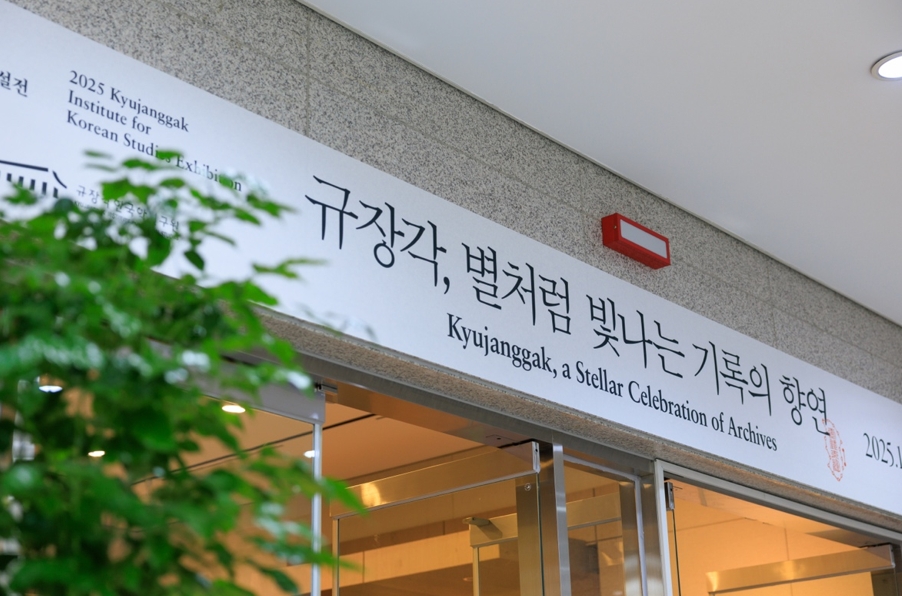
The Entrance to the Exhibition: Open on business days from 10:00-17:00
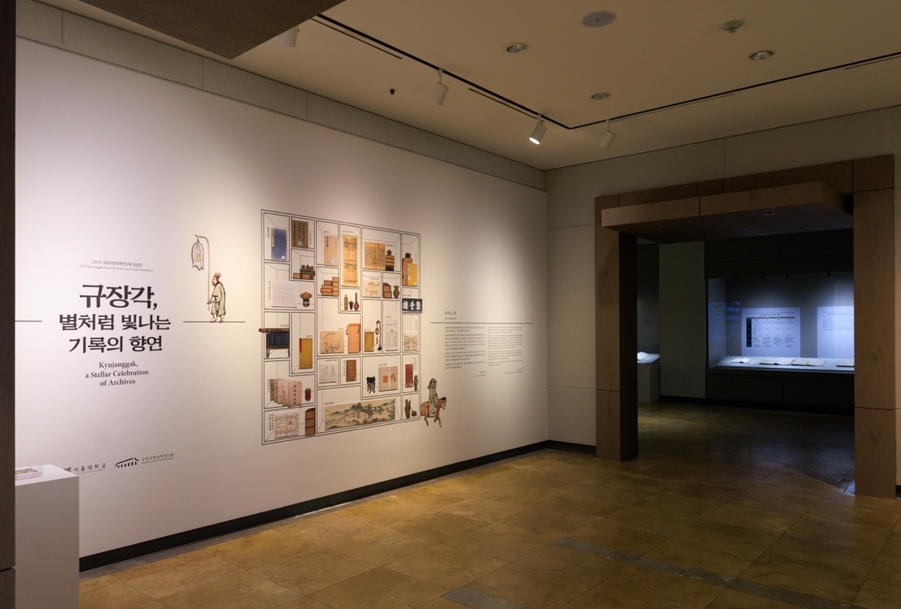
A Sneak Peek into Kyujanggak’s Treasures: An illustrated glimpse of the invaluable records housed within the archives, preserving centuries of history.
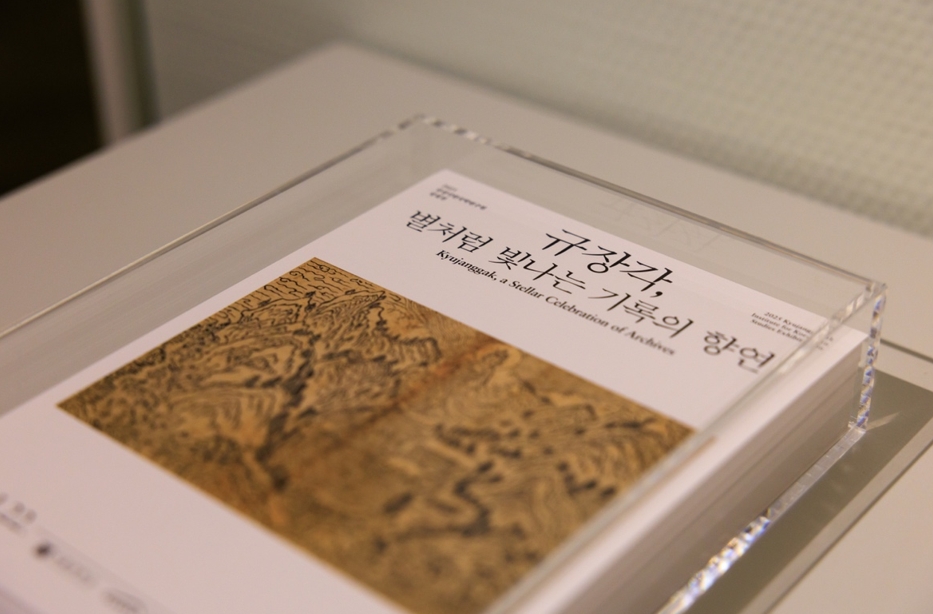
Pamphlets placed throughout the exhibition, offering insights and enriching the visitor’s journey
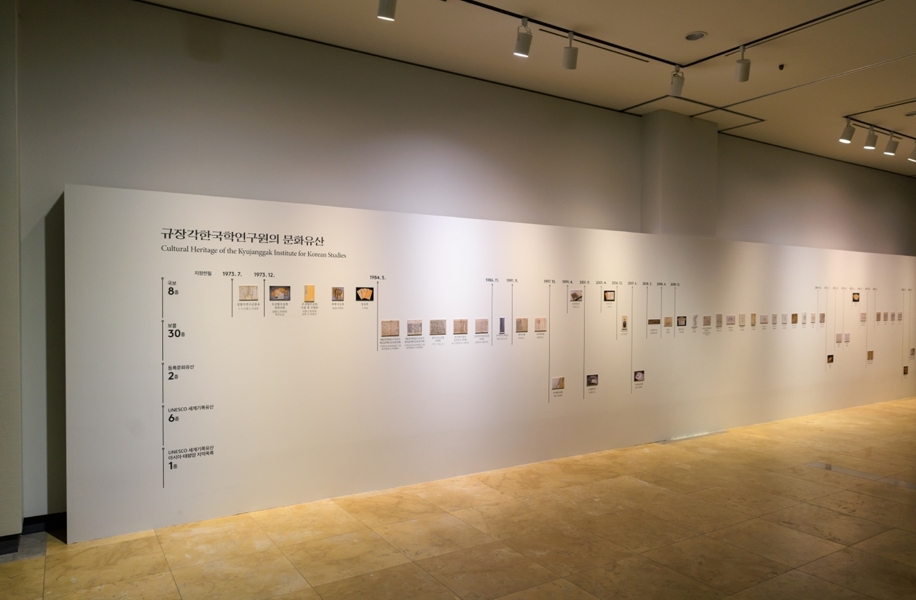
A wall mapping out the Cultural Heritage of the Kyujanggak Institute for Korean Studies
The visitor’s journey commences with an introduction to Kyujanggak itself: displays of the various inscriptions and signboards that have graced the Institute’s buildings over time offer a vivid sense of its evolving identity through the centuries. Around the corner, a spacious viewing room features a beautifully produced documentary that loops throughout the day, explaining Kyujanggak’s origins, purpose, and its ongoing mission to preserve Korea’s documentary legacy.
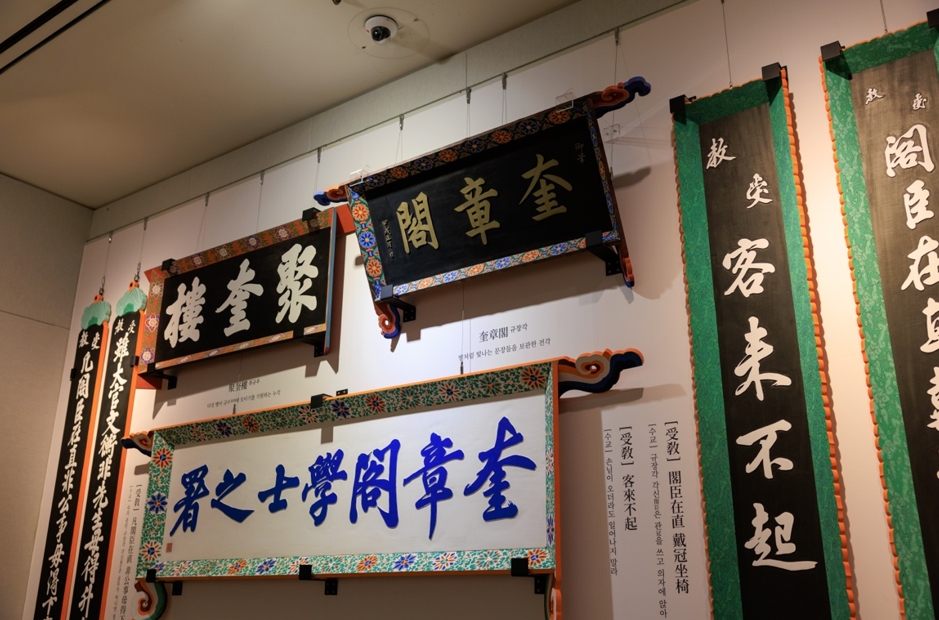
Signs of the Times: Entrance plaques that have graced Kyujanggak over the decades, bearing witness to its evolving history.
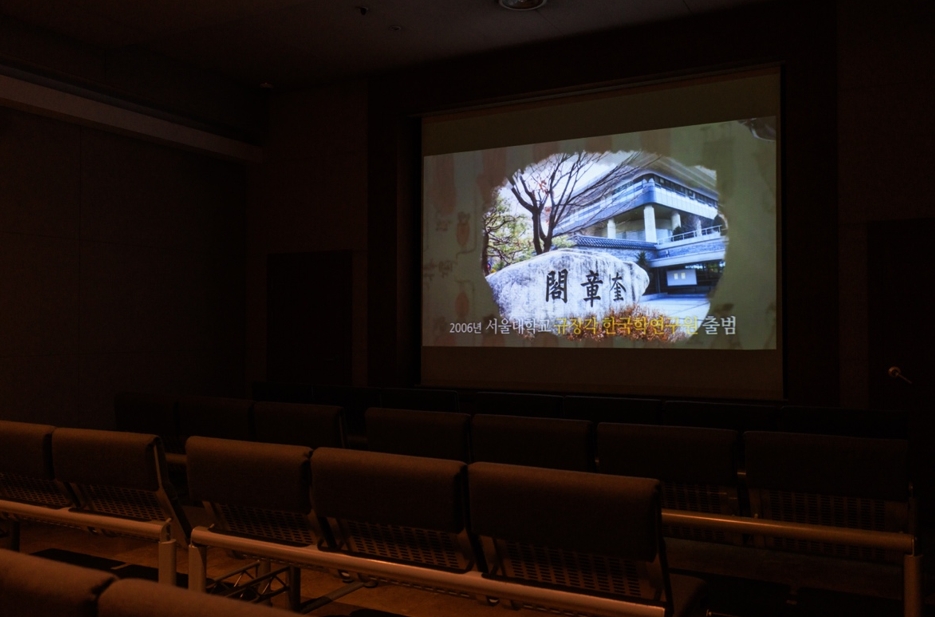
The exhibition’s screening room, where visitors can engage with Kyujanggak’s audiovisual history
Following this, the exhibition unfolds in several thematic sections. The first, “The Art of Ruling and the Search for Good Governance,” spotlights the most iconic records of the Joseon dynasty’s statecraft and administration. Notable highlights include the Annals of the Joseon Dynasty and the Royal Protocols of the Joseon Dynasty, which demonstrate a 500-year legacy of meticulous documentation and cultural preservation. Amid these momentous state documents, a dash of humor emerges: visitors can view the original page from the Annals of King Taejong (1432) detailing a 1404 incident where King Taejong took a tumble from his horse. Determined to keep it under wraps, the king ordered the court historiographers to leave it out. Instead, they dutifully recorded not only the accident but also his plea to omit it—an endearingly candid testament to the uncompromising integrity of Joseon’s official record-keepers.
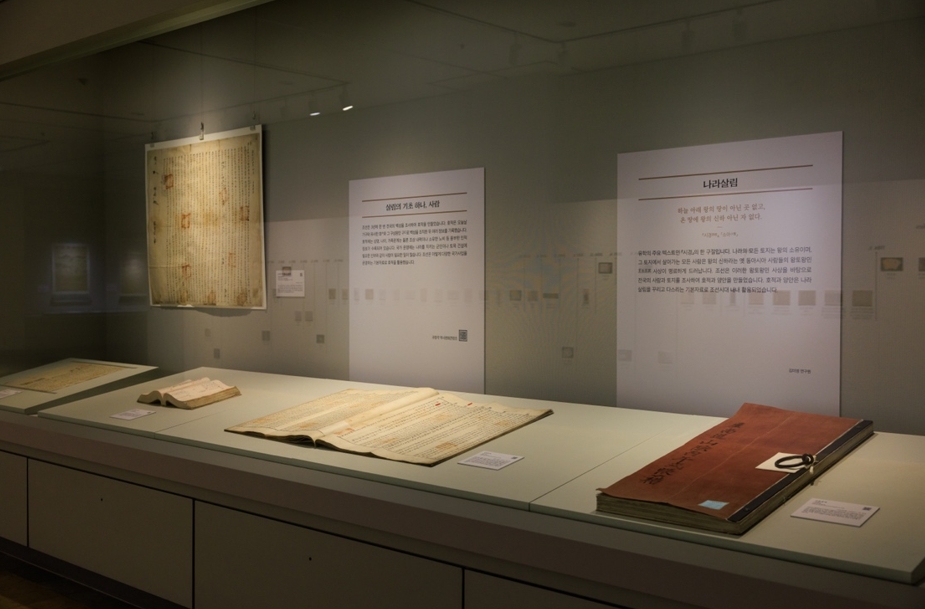
Important iconic records meticulously laid out for the visitor’s viewing pleasure
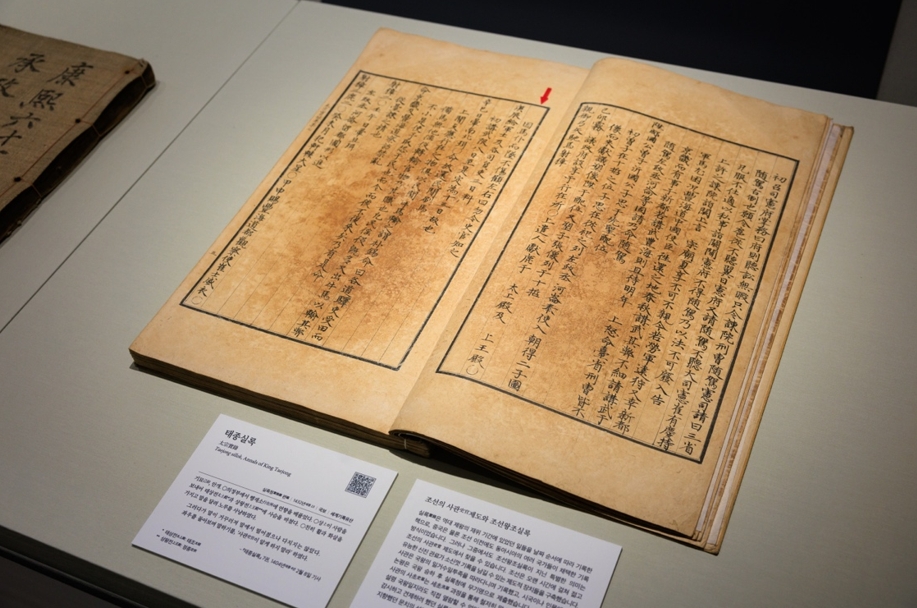
A page from the Annals of King Taejong (1432) with an arrow marking the lines describing the king’s fall from his horse (read top to bottom and left to right in hanja)
The next two sections, “The Foundation of Joseon Finance” and “Memories of the Land Engraved in Old Maps,” delve into how population surveys, household registers, and land records laid the groundwork for the Joseon dynasty’s administrative and financial structures. Of particular note is Kyujanggak’s extensive collection of historical maps—the largest in Korea—offering a fascinating window into the peninsula’s evolving cultural landscapes and geographical awareness over centuries.
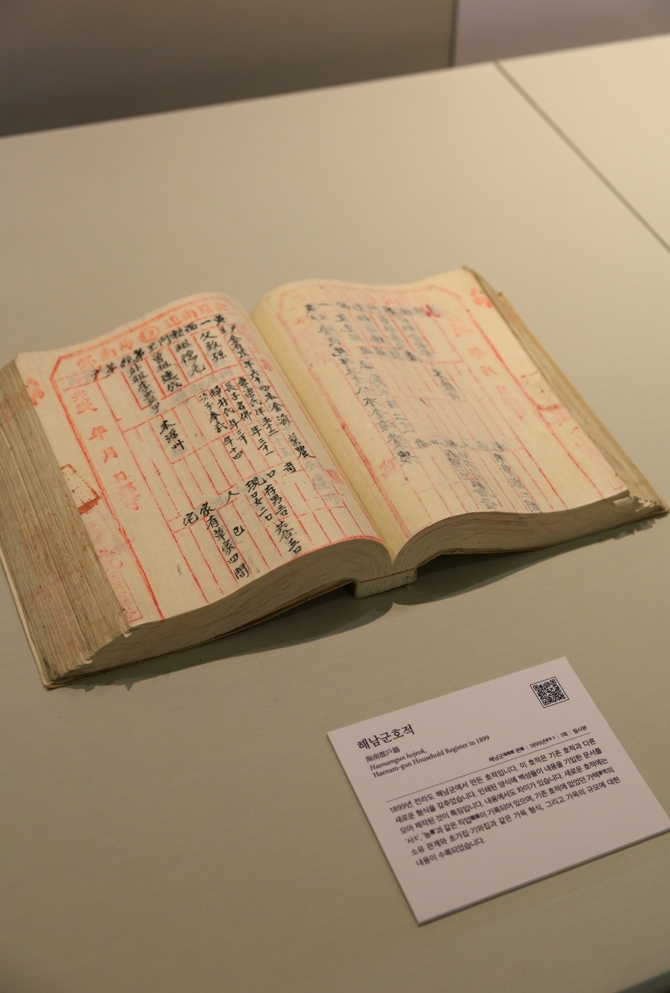
An open record from the Haenam-gun Household Register (1899)
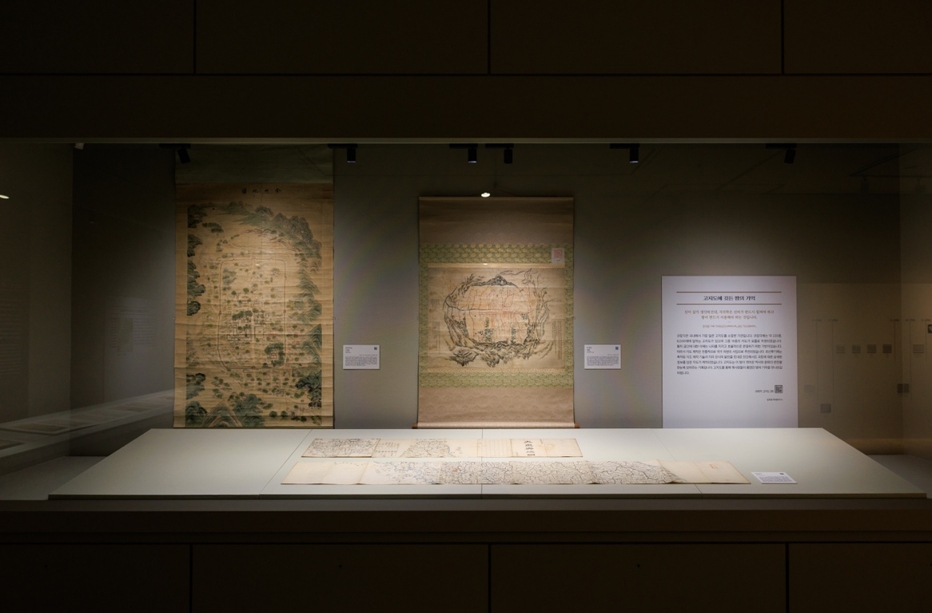
Historical maps illustrating Korea’s evolving landscape
In “Mountains, Water, and People Painted with Brushes,” the exhibition pivots to the realm of visual artistry. These convey aspects of the past no mere written record can capture by featuring two prominent genres of Joseon-era painting. The first, true-view landscapes, captures famous scenic sites with breathtaking detail, while the second, documentary paintings, immortalizes important gatherings, celebrations, and moments in social life.
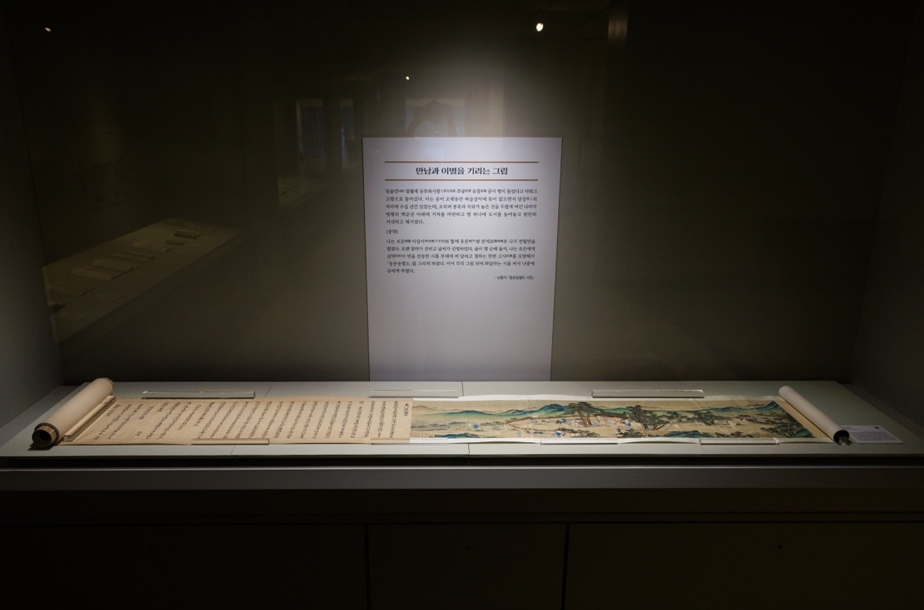
A painting of a farewell at the East Gate, Dongmunsongbyeoldo
“Encounters with the West” examines how Western ideas reached Korea, largely via Chinese intermediaries. Through books, maps, and military treatises, this section illustrates how Joseon scholars and officials sought to expand their knowledge of the wider world, particularly to strengthen the country’s economy and defence capabilities.
In the following section, “The Path to Truth in Pursuit of Wisdom” shows how three major schools of thought—Confucianism, Buddhism, and Taoism—shaped Korean spiritual and philosophical life. Historical texts and artifacts demonstrate how these philosophies served as guiding principles during troubled times, inspiring people to strive toward moral integrity and enlightenment.
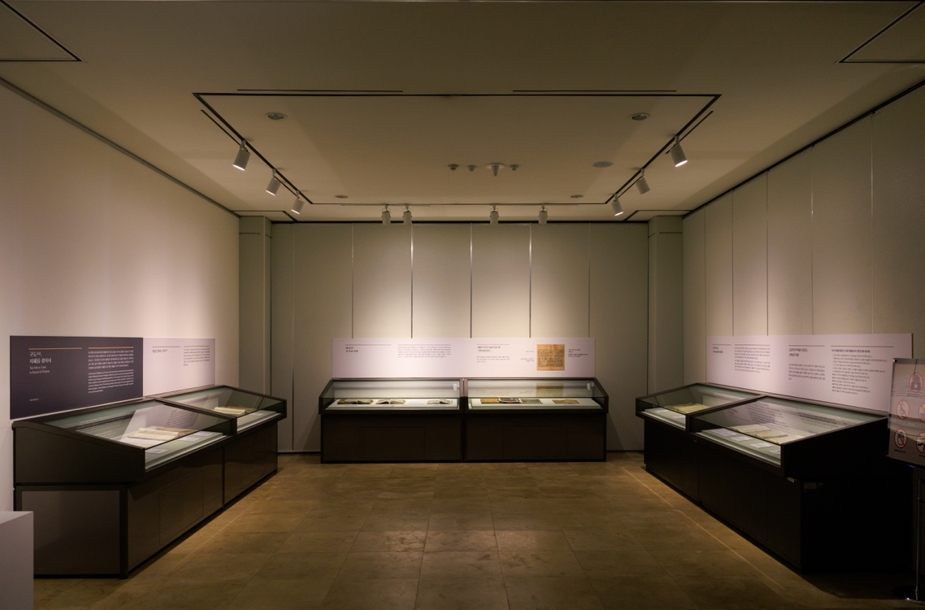
Archival documents displayed in the “Path to Truth in the Pursuit of Wisdom” section, reflecting the intellectual traditions that shaped Joseon society
The last section titled “The Masterpieces of the Joseon Publication Found in Kyujanggak,” culminates with a chaekgado, a genre of still-life painting that visually depicts the remarkable printed works central to Korean intellectual heritage. One of the most distinctive hallmarks of publication culture in Joseon was the state’s leading role in printing and disseminating texts. Visitors can admire a curated selection of these seminal volumes, many drawn directly from Kyujanggak’s library stacks, and witness for themselves the state’s commitment to knowledge production and cultural stewardship.
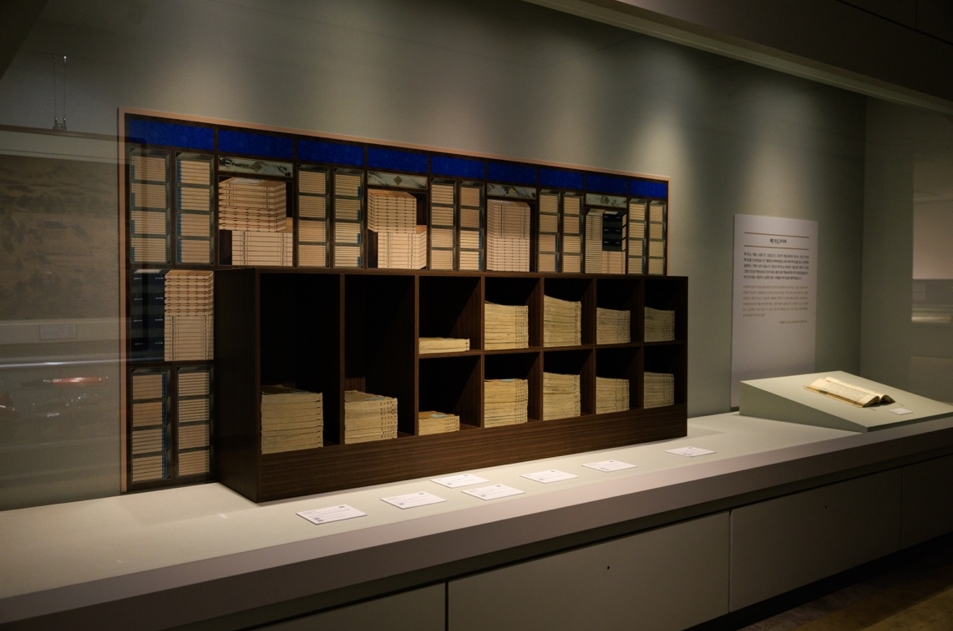
A chaekgado still-life illustration paired with a recreated bookshelf in front
Kyujanggak, a Stellar Celebration of Archives presents visitors with an intimate glimpse into Korea’s past and the enduring value of preserving historical documents. With its meticulously chosen items, the exhibition truly commemorates a venerable institution’s legacy. The exhibition remains open until August 29 so visitors are welcome to immerse themselves into the pivotal works and ideas that have shaped—and continue to shape—Korea’s cultural and archival identity.
Written by Hyun Kyung Jung, SNU English Editor, jhyunk@snu.ac.kr

